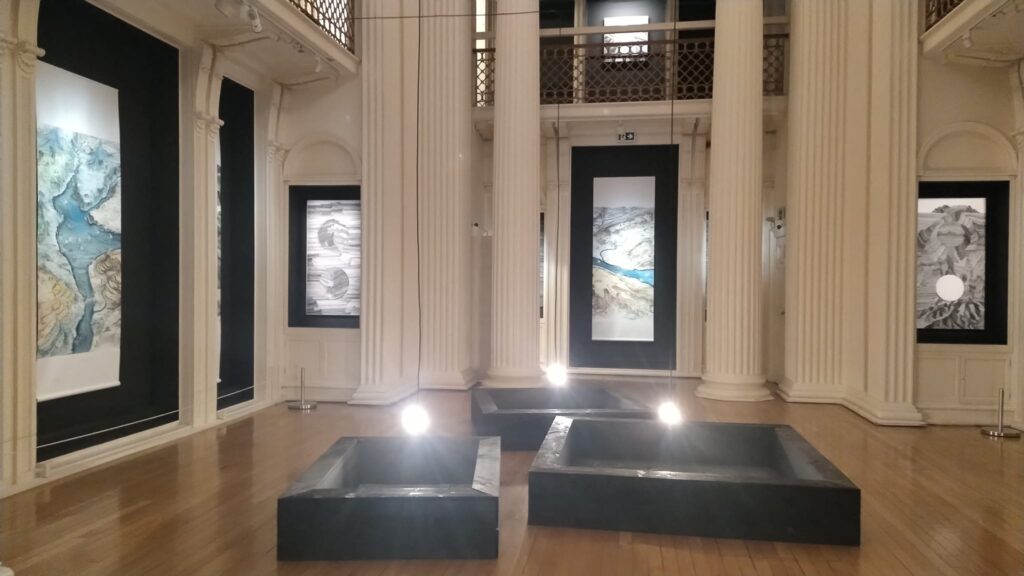Talbot Rice gallery workshop feedback
When planning a physical exhibition, curators should choose a suitable space and make good use of the environment. We need to pay attention to and observe the lighting, sound, height, width, temperature and electricity of the space. For example, large-scale installation art is suitable for display in bright spaces with high ceilings, while video works are suitable for display in small and dark spaces. Every space has potential capacity and problems, and older buildings may have problems with water leaks. The important point is that the fire exits have to be clear and not blocked. The curator should let the space play its role to the maximum and avoid problems as much as possible.

The exhibition space involved in the production and presentation of works is not only an expansion of the creator’s self and unique experience and values, but also an interpretation field based on the audience’s experience, an extension and projection of each viewer’s self. The exhibition space is an environment, a context, and a text. When it comes to substantive attributes, it refers to the interior of a building, or any form of natural or man-made field. Usually, when viewers come into contact with a work, if they do not have a specific orientation in mind, they may only stop at the experience and interpretation of individual works, and the exhibition space where the works are located will degenerate into a background with limited functions. The best situation is to maintain its neutrality, silence does not produce any interference, so that the work obtains the highest right to speak.
When an exhibition is on display and the audience walks into the gallery, they also enter the space text created by the curator to be interpreted. The frame of reference they use to perceive, respond, and interpret comes from the broad experience base of specific audiences, including their memory, knowledge, literacy, and their social values and spirit of the times. Therefore, even if the same batch of works is exhibited, under different ordering relationships, under different spatial intentions and atmosphere creations, the information provided is completely different. And different message recipients, that is, individual audiences, naturally form relative interpretations. Such a process is not essentially different from the process of appreciating individual works. The space of the exhibition is like a group of spatial installation works, and the curator is same as the artist, having unlimited media possibilities.




Recent comments